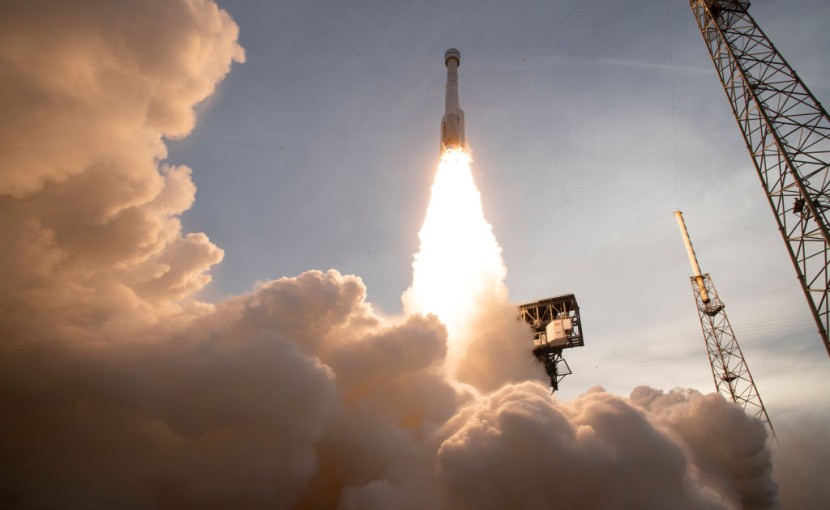
United Launch Alliance (ULA) successfully sent one of its Atlas 5 rockets into space, which later blasted multiple National Reconnaissance Office satellites on Sunday to monitor the geosynchronous equatorial orbit (GEO).
The joint mission involves the U.S. Space Force and National Reconnaissance Office with the goal of improving space domain awareness. The Atlas V 551 variant rocket, nicknamed "The Bruiser," was launched with the payload "Silentbarker," also known as NROL-107.
Atlas 5 Rocket Update
The rocket has already flown dozens of times prior to the latest launch and includes NASA's New Horizons, which is the first spacecraft to encounter Pluto, as well as the space agency's Juno mission to Jupiter.
In a statement on social media, ULA said that its Atlas 5 rocket is a reliable workhorse for U.S. national security and has successfully delivered more than 50 missions into space to serve the U.S. Space Force and the National Reconnaissance Office.
Additionally, the company said that the mission on Sunday serves the needs of the U.S. Defense Department and intelligence community. This is by providing the capability to search, detect, and track objects from a space-based sensor for timely custody and event detection, as per UPI.
The government will be able to overcome existing ground sensor limitations by conducting surveillance from space. From there, authorities will be able to collect timely satellite metric data around the clock.
The statement added that Silentbarker will bolster the NRO's ability to provide a wide range of timely intelligence information to national decision-makers, warfighters, and intelligence analysts. They will be able to use this information to protect the nation's vital interests and support humanitarian efforts globally.
While the successful launch is a cause for celebration, the initial plan for the rocket was to blast off on Aug. 28, 2023. But it was delayed due to the potential impact of Hurricane Idalia, forcing the company to roll back the rocket into its facility to wait for the storm to pass before once again deciding on a new launch date.
Monitoring the GEO
The mission aims to keep tabs on the behavior of potential enemy spacecraft in the high orbit that is favored by spy satellites, communications stations, and other high-priority U.S. assets. Silentbarker is built to operate in a geosynchronous orbit that is located 22,300 miles above the equator, according to Yahoo News.
In a statement, NRO Director Chris Scolese said that the idea of this mission is to put a satellite in geosynchronous orbit and then observe that area to get a sense of what is happening day to day.
During a press conference on Aug. 28, Scolese said that communication satellites move from one location to another in order to provide better coverage for other areas. The program went from concept to development over a roughly five-year period.
The NRO and SSC both had overlapping interests in improving their capabilities in the GEO space and subsequently forged a collaboration that later resulted in Silentbarker. The program consists of two mission launches, the first of which is NROL-107, said SpaceFlight Now.
© 2025 HNGN, All rights reserved. Do not reproduce without permission.








